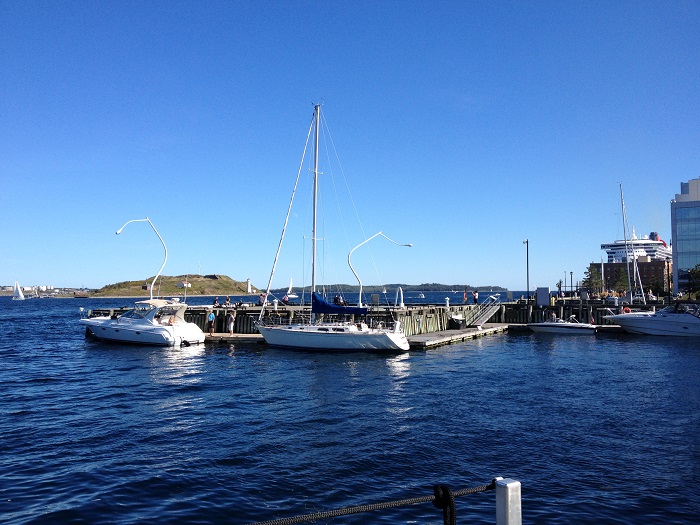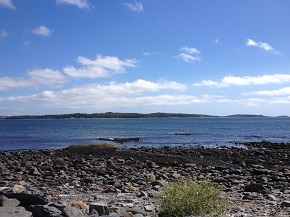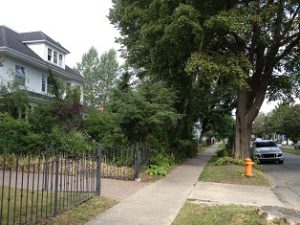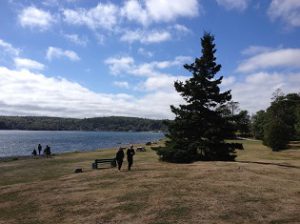
September 16, 2016, by Blue-Green team
2016 Livable Cities Forum: Changing Climate, Changing Communities
“The top global risk is the failure of climate change mitigation and adaption” (Global Risk Landscape 2016)
Blog post by Emily O’Donnell, University of Nottingham.
Earlier this week I attended the 2016 Livable Cities Forum (#LCF2016) in Halifax, Nova Scotia, hosted by ICLEI Canada (Local Governments for Sustainability), Halifax Regional Municipality, and Partners for Action (an applied research network at the University of Waterloo, advancing flood resiliency in Canada in the face of a changing climate and extreme weather). The conference focussed on;
- building resilience to extreme weather and climate change
- looking at how we can prepare for extreme events in coastal settings
- building partnerships to address the risk of climate change and community vulnerability, and
- working with communities and municipal stakeholders to understand how best we can build resilient, liveable communities that understand future risk and have taken action to be prepared.
Throughout the three days of conference presentations, plenary sessions and discussions I learned a lot about Canada’s challenges towards creating resilient communities, and how they are starting to overcome some of the barriers and begin preparing communities for the impacts of extreme weather and climate change. There were many inspirational speakers, including The Honourable John Godfrey (Special Advisor for Climate Change Ontario Ministry of the Environment and Climate Change), Paul Kovacs (Executive Director, Institute for Catastrophic Risk Reduction), and Charlotte MacAlister (Senior Program Office, International Development Research Centre), who engaged the audience with their thoughts and experience on putting research into action and the need for partnership working to achieve resilience. Here are some of my highlights from the conference.
Day One
During the opening plenary on the first day we were reminded of the varied climate change impacts that Canada is facing; not just extreme storms, sea level rise and flooding, but ice storms, hurricanes, forest fires, freeze-thaw cycling, droughts and temperature rises. Andy Fillmore (Honourable Member of Parliament for Halifax) stated that projected sea level rise associated with a 2°C rise in global temperatures (noting that the aim of COP21 is to limit global warming to well below 2°C) could leave Nova Scotia as an island. The importance of acting now to build community and environmental resilience is all too apparent. This is linked to the growing trend in Canada for climate change adaptation rather than solely working towards mitigation. Many municipalities have also spent the last few years focussing on planning possible adaptation; now there is move towards actual implementation. Michäel Houle (ICLEI Canada) gave five recommendations for bridging the gap between planning and implementation:
- Adapt an integrated implementation approach
- Start with simple solutions/low hanging fruit, e.g. Toronto City Council has now approved a bylaw making it mandatory for property owners to disconnect their downspouts
- Seek out win-win actions where multiple benefits can be created for multiple beneficiaries
- Projects need to be multi-institutional involving multiple stakeholders
- Monitoring and measuring plans need to be set out early – and must not be forgotten!
The afternoon sessions I attended focussed on innovative practices for paying for stormwater management, including building resilience through stormwater user fees and incentivising green infrastructure for stormwater management. Stormwater user fees can create a dedicated revenue stream for stormwater management, as discussed in a new report from Sustainable Prosperity (a national green economy think-tank). The difficult question is to decide how to charge – one price per property, or prices based on area of impermeable surfaces? Both have been trialled in Canada with varying degrees of success and community backing.
The last session of the day centred on transformation and incremental adaptation. An example of transformation adaptation is amphibious architecture – floating when it floods. Elizabeth English (Associate Professor, University of Waterloo) gave an insightful presentation on amphibious houses in New Orleans and the Buoyant Foundation Project that aims to support the recovery of flood-sensitive locations by providing a strategy for the safe and sustainable (and affordable) restoration of historic housing.
Day Two
The plenary session discussed the importance of putting research into action through academic partnerships with municipalities, private and public organisations. Academic research was cited as the ‘science foundation for local action’ by Paul Kovacs (Institute for Catastrophic Risk Reduction), provided that research addresses practitioner needs and societal questions. Jean Andrey, Dean of the Faculty of Environment, University of Waterloo, reiterated one of the key messages of the conference; that we need to break down our silos and ‘infiltrate each other’s communities to help understand real-world problems’. The importance of dialogue between academics and their audiences was also emphasised, but this needs to be two-way with audiences also having a responsibility to reach out to academics, as well as academics disseminating their research in a context that is understandable.
Flood insurance (for river, coastal and surface water) is a relatively new concept in Canada and only available in some municipalities. The co-operators (Canadian insurance company) conducted a survey and found that only 5% of 2400 Canadians in flood risk zones were aware of their risk, demonstrating the vital importance of raising awareness of risk and risk management options. The importance of building back stronger after a flood event was stressed by many presenters when describing how their municipalities and towns have coped with flooding and lessons learned for the future. The importance of wider climate change mitigation and adaptation was reiterated by a reference to the Global Risk Landscape 2016 (developed by the World Economic Forum) that states that the top global risk is the failure of climate change mitigation and adaption. Larissa Holman (Ecology Action Centre) also made a great point that the first day of a blue-green infrastructure investment (e.g. a living shoreline) is its worst day (with performance subsequently improving), while the first day of a grey infrastructure asset (e.g. a sea wall) is its best day (and performance subsequently decreases).
In the afternoon I gave a presentation on ‘Overcoming the barriers to Blue-Green infrastructure through multiple benefit evaluation’ in the ‘Blue-Green Cities: Integrating Water Management with Urban Green’ session. I introduced some of the physical science and socio-political barriers to widespread implementation of Blue-Green infrastructure using two case studies: Portland Oregon (US) and Newcastle (UK) (see Thorne et al., 2015). I then discussed how these barriers might be overcome, focussed on promoting multifunctional space and identifying, quantifying and monetising (where possible) the multiple benefits. I highlighted how CIRIA’s Benefits of SuDS Tool (BeST) and the Blue-Green Cities Multiple Benefits Toolbox can be used in combination to provide an indication of the intensity and spatial distribution of key benefits associated with a Blue-Green infrastructures scheme.
Key themes
Several key themes were echoed throughout the plenary and parallel sessions that I attended:
- Climate change adaptation needs to be proactive, and adaptation does not necessarily mean building something; a change in behaviour and culture is just as important (and goes towards explaining why the myriad engineering solutions we have for stormwater management for instance are not being implemented)
- Moving towards city resilience works best when there are collaborations and alignment between federal, regional and municipal government
- While climate change has been embedded in Canadian municipal policy since the 2000s this has primarily focussed on mitigation – municipalities are now creating adaptation plans
- Adaptation planning is not the sole responsibility of ‘climate change departments’ but should be incorporated into all infrastructure planning – transport and energy for instance will be impacted by climate change and need to work to make their infrastructure resilience and continue to provide the level of service that is expected. The private sector also need to be involved in discussions as they are suppliers of key infrastructure and services
- Stormwater retention credits and incentives have been proven to be a great way to get local residents interested in stormwater management and potentially retrofitting their own properties
- Stormwater charges puts stormwater funding on a more sustainable footing: more than 1500 municipalities in the US have stormwater charges and there is a growing trend for this in Canada – could this work in the UK?
- While it may be difficult for the City authorities to generate community buy-in for sustainable drainage schemes, involvement from not-for-profit organisations can help get the ball rolling, e.g. the RAIN project, developed by Green Communities Canada, works with municipalities and landowners to reduce run-off contamination by slowing stormwater flows and maximizing natural filtration
- Academic research is most effective when it is driven by practitioner and societal needs
- Nature can be a vital tool for community resilience, from the multiple benefits of street trees to protected areas that offer a natural solution to climate change. It is also importance to manage ecosystems for change, not just persistence
Day Three
My conference finished with a City Walkabout Tour, led by Professor Peter Duinker, Dalhousie University. Peter showed us some of the good (and bad) examples of urban tree planting and talked us through the strategy behind the Halifax Urban Forest Master Plan (UFMP), which was approved in 2012. The tour ended at the Point Pleasant Park, a historic 75-ha wooded park at the south end of the Halifax peninsula that has predominantly recovered from the loss of 75,000 trees following Hurricane Juan in 2003. A beautiful location to end the conference, coupled with great weather!
The conference presentations will be available online from 30th September.






quite informative article! thank you. http://estates.uonbi.ac.ke/